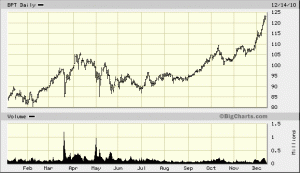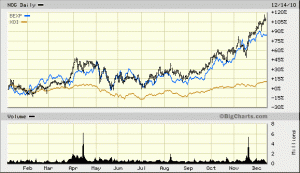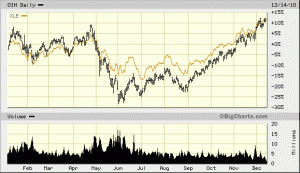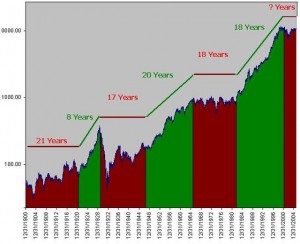Profiting From Temporary Market Distortions
When the BP Oil Spill first came to light there was a sharp sell off in the entire oil sector including crude oil itself. I had a hard time understanding this reaction because obviously this was going to cause a slow down in drilling activity in the gulf. Any slow down in drilling activity in my mind would be bullish for crude oil prices and land based drillers. Nevertheless, the entire sector was walloped for about a month and the price of cash crude fell from $85 to $66.
Opportunity #1 – Buy a Crude Oil ETF on the panic because tighter restrictions on oil production will reduce the future supply of oil. It only took 2 months for the price of cash crude to get back into the $80s.
Another way to play crude directly that was even more dynamic was to purchase BPT – BP’s Prudhoe Bay Trust. This was not only hit by the drop in oil prices but because of it’s association with BP. However, since BPT is a Royalty Trust that operates as a completely separate entity there was little reason to discount it. As oil prices recovered BPT shares have soared almost 50% while paying out strong monthly dividends.
Opportunity #2 – Buy land based oil drillers and producers as demand for their services and production will increase to compensate for the lack of gulf drilling. Stocks of oil producers working in the Bakken formation (Western ND & Eastern MT) for example have soared since June. NOG, BEXP and KOG are all examples of companies aggressively drilling wells in ND.
This chart shows how NOG (Black Bars) and BEXP (Blue Line) have outperformed the XOI Oil and Gas Index (Brown Line).
Opportunity #3 is not quite as explosive as the other two but represents a low risk play. You can see by the chart below that OIH was actually out performing XLE for the first 4 months of 2010. During the “Spill Scare” the Oil Stock ETF – OIH fell harder than the XLE because there are more oil drillers in that ETF. If you were a holder of XLE you could’ve traded your shares for OIH. You could’ve bought OIH outright considering how big of a discount it was trading at or you could’ve went long OIH and short XLE against it (Lowest Risk).
Using any of these techniques would’ve been profitable as the spread normalized within 6 months and now there is no longer a discount.
The most important thing you can do as an investor is keep a cool head while those around you are in a state of panic. Each event that shocks the stock market normally leads to opportunity on the other side.




